
O Salame Toscano é típico da Itália e também é conhecido como finocchiona. O Salame Italiano Toscano Finocchiona tem origem na idade média, entre os séculos 14 e 15. É um salame que contém erva doce, ou finocchio em italiano, e por isso também é conhecido como finocchiona. É um salame geralmente espesso e de maturação média ou longa. A erva doce foi inicialmente utilizada para substituir a pimenta do reino, que era um ingrediente bem mais caro. O produto acabou popularizado e hoje é produzido em diversas regiões da Itália.
O salame Finocchiona foi registrado, em 2015, como produto de origem controlada e só pode ter esse nome quando produzido na região da Toscana.
Há uma variação deste salame chamado de sbriciolona, que consiste na mesma receita com maturação mais curta e pedaços de carne mais grossos. Fiz também esta variação cortando metade da carne com uma faca. Aproveitei essa oportunidade para testar se há diferença significativa na textura final do salame comparando a carne moída em máquina e cortada à mão. Em geral os moedores caseiros esmagam parcialmente a carne reduzindo a qualidade do produto final, então verei se isso é perceptível neste teste.
INGREDIENTES
- Pernil adquirido – 3040g;
- Pernil limpo – 2120g;
- Sal – 40g;
- Sal de cura tipo 2* (6% de nitrito, 3% de nitrato e 93,75% de sal) – 5g;
- Alho – 10g;
- Açúcar – 8g;
- yakult (leite fermentado) – 1 potinho (ou cultura starter, se tiver);
- Vinho tinto – 50ml;
- Pimenta do reino – 8g;
- gordura extra – 100g; – opcional
- semente de erva doce – 14g;
- Tripa bovina** calibre médio – 4 segmentos de 30cm.
*Caso tenha dúvidas sobre o sal de cura – nitrito de sódio e nitrato de sódio – leia o post Sal de cura o que é e quanto usar
**A tripa bovina pode ser substituída por tripa suína de calibre elevado ou de colágeno calibre 45+. Já compre cortada ou corte a tripa em segmentos de 30 cm e amarre uma das pontas com barbante. Isso facilitará o enchimento.
Preparo do Salame Italiano Toscano
Refrigere deixando a carne bem gelada, remova do refrigerador, retire a pele(couro) preservando o máximo possível da gordura subcutânea, pois ela pode ser usada no salame. Pique a gordura em pedaços pequenos, no tamanho desejado para o produto final, reserve e congele. Prefiro pedaços mais grossos de gordura pois algumas pessoas preferem tirar, então pedaços maiores facilitam a remoção.
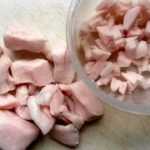
Limpe bem a carne removendo o máximo possível de tecido conjuntivo. Corte em cubos de aproximadamente 1 cm.
Para extrair o aroma triture as sementes de erva doce com um socador ou pulsando rapidamente no liquidificador.
Adicione todos os ingredientes na carne exceto o yakult e a gordura, que serão acrescentados no final do preparo pouco antes de embutir. Misture o suficiente para que tudo fique distribuído e refrigere por 24 horas. Nesse período o sal e o sal de cura serão incorporados por igual.
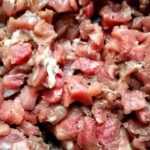
Retire do refrigerador e passe toda a carne pelo moedor ou, caso prefira ou não tenha moedor, pique com uma faca bem afiada em pedaços bem pequenos, o menor que conseguir.
Acrescente o Yakult e a gordura picada congelada. Misture bem com as mãos ou bata na batedeira orbital com a pá plana por aproximadamente 2 minutos. A mistura deve ficar com boa liga, pegajosa, isso fará com que o salame fique mais compacto.
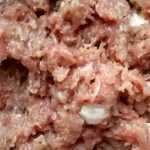
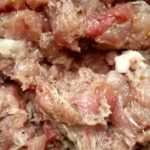
Proceda com o enchimento da massa nas tripas. Deixe bem cheio, ou seja, faça pressão e coloque bastante massa, deixe bem compacto. Faça furos onde houver bolhas de ar e amarre a outra ponta da tripa.

Como podem ver a quantidade de carne da receita rendeu quatro salames. O peso inicial deles ficou entre 553 e 686 gramas.
Para promover a fermentação inicial da bactéria lática do yakult deixei pendurado em temperatura ambiente por 24 horas. Estava frio então não passou dos 20 graus. Após as 24 horas pendurei na câmara(adega) para terminar de curar. A adega tem controle de temperatura e ventilação forçada por ventoinha, então funciona muito bem como câmara de cura.
Inicialmente regulei a temperatura em 17 graus e deixei por 6 dias, depois reduzi para 14 graus e mantive assim até o final. A umidade ficou entre 75% e 70% durante todo o período. Em teoria é uma umidade baixa, mas não tive problemas. Acrescentei um copo com água e sal no fundo da câmara para ajudar a manter essa umidade. Quanto mais copos com água acrescentar mais úmido ficará o ambiente fechado. Pode manter até 85% de umidade, quanto mais úmido mais lento o processo, mas, em tese, melhor será o produto final.
Constatações
Foram 22 dias de cura na câmara;
A perda de peso total dos salames ficou entre 44,79% e 47,20%;
A perda de peso diária oscilou entre 2% e 3%, variando muito pouco de um salame para o outro e sem diferença entre a carne moída e cortada com faca;
A fermentação foi forte e inclusive o cheiro dela foi bastante marcante durante toda a cura. O yakult é ótimo para fazer salame!
O salame foi totalmente colonizado pela colônia branca lisa e seca, um excelente indicador de que tudo estava correndo bem. Mais uma vez concluo que o yakult é ótimo para fazer salame!
Houve diferença visual sutil entre a carne moída e picada com faca.
A textura do salame com carne moída e cortada com faca foi significativa na maciez, o salame com carne moída ficou mais macio em comparação ao picado. Particularmente preferi o moído.
E o mais importante, o sabor ficou excelente, marcante, levemente picante e ácido(creio que devido ao vinho e fermentação), enche a boca de saliva ao comer. Deu para notar a erva doce. Uma delícia! Recomendo a todos que façam, quem só comeu salame comercial de frigoríficos grandes vai notar uma diferença imensa no sabor.
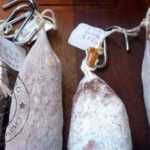
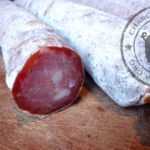


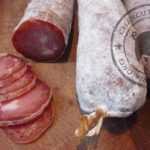

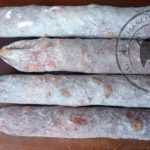
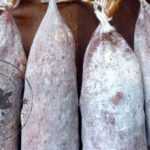
-
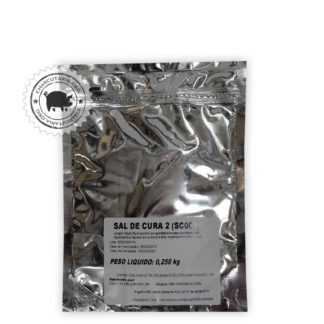 Sal de cura 2R$ 8,00
Sal de cura 2R$ 8,00 -
 Sal de cura 1R$ 8,00
Sal de cura 1R$ 8,00 -
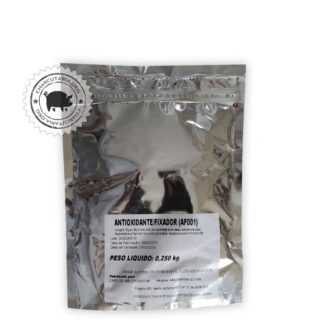 Antioxidante FixadorR$ 23,00
Antioxidante FixadorR$ 23,00 -
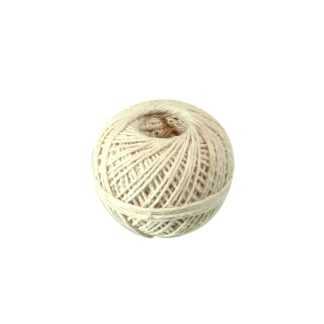 Barbante culinárioR$ 7,90
Barbante culinárioR$ 7,90 -
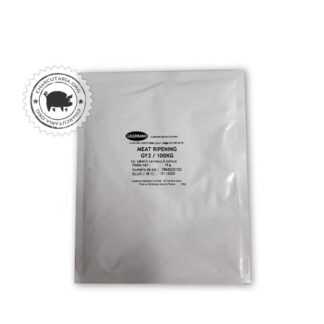 Cultura StarterO preço original era: R$ 69,90.R$ 59,90O preço atual é: R$ 59,90.
Cultura StarterO preço original era: R$ 69,90.R$ 59,90O preço atual é: R$ 59,90. -
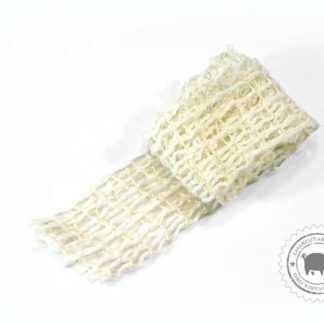 Rede elástica culinária 50mmR$ 15,00
Rede elástica culinária 50mmR$ 15,00 -
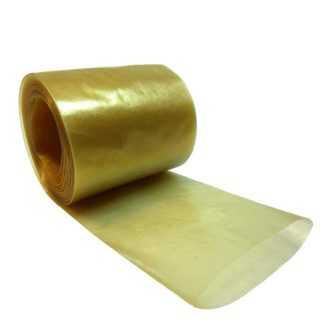 Tripa de colágeno 45mm rolo 5 metros salameR$ 25,00
Tripa de colágeno 45mm rolo 5 metros salameR$ 25,00 -
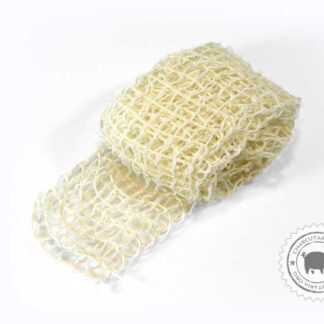 Rede elástica culinária 65mmR$ 18,00
Rede elástica culinária 65mmR$ 18,00 -
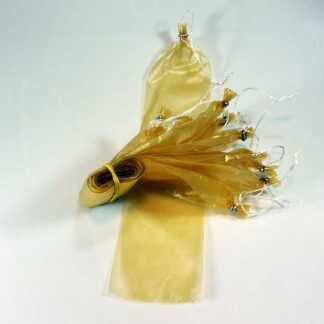 Tripa de colágeno salame 45mm 10 unidades amarradasR$ 22,00
Tripa de colágeno salame 45mm 10 unidades amarradasR$ 22,00 -
 Tripa de colágeno 80mm copa e salameR$ 29,90
Tripa de colágeno 80mm copa e salameR$ 29,90 -
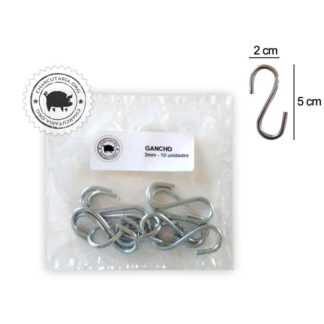 Gancho GalvanizadoR$ 12,00
Gancho GalvanizadoR$ 12,00 -
 Tripa de colágeno salame 50mm 10 unidades amarradasR$ 24,00
Tripa de colágeno salame 50mm 10 unidades amarradasR$ 24,00


Olá, Edu! Como vai? Amigo, estou iniciando agora e tenho uma dúvida sobre a maturação do salame na geladeira (usando aquela vasilha + fan + higrômetro). A pergunta é: quando minha esposa abrir a geladeira, sentirá um forte cheiro proveniente da maturação do salame? hahaha A geladeira fica impregnada com algum cheiro? Fica, né? Mas o cheiro é bom ou é ácido/ruim? Abraços!
O cheiro mais forte é o dos condimentos mesmo. A maturação traz um cheiro também, mas caso a quantidade de salames seja pequena, como 3 ou 4 salames, o cheiro será suave. Caso faça o salame fermentado, o cheiro é mais ácido, caso faça sem fermentação, embutindo e já levando para a geladeira, o cheiro é mais neutro.
Boa tarde
Gostei muito de tudo. Achei tudo muito bem explicado.
Vou fazer um pedido no final do mês. Produtos para
fazer salames e copas.
Boa tarde, da para fazer essa receita na geladeira seguindo aquele seu passo-a-passo? No caso, só deixar fermentar um dia fora da geladeira e depois curar ele dentro da geladeira com a caixa e a ventoinha?
Mais uma dúvida, adicionar o Yakult com vinho e açúcar, não deixa o salame muito ácido?
Agradeço pela atenção.
Oi Almir. Pode fazer daquela forma na caixa na geladeira, vai dar certo. A acidez pela fermentação é regulada pela quantidade de açúcar, então colocando pouco açúcar as bactérias láticas terão pouca fonte para acidificar. A receita tem pouco açúcar, então não fica muito ácido. O vinho é opcional, uma complementação para proteger enquanto a fermentação ainda não ocorreu suficientemente.
Eduardo eu fiz duas receitas, uma utilizando erva doce a outra não. Para embutir usei tripa natural bovina… senti que nos salames sem erva doce houve uma transferência de sabor e aroma da tripa para o salame… como posso evitar isso? Uma foto do resultado.
Salame Italiano Toscano Finocchiona pode ser defumado levemente?
Agradecido
Pode sim, mas defuma em temperatura baixa para não cozinhar a carne.
Esse salame leva a mesma proporção de açúcar e sal… pelo que vi os demais leva 1/2 porção de açúcar em relação ao sal…. poderia comentar essa particularidade para nos?!?!
Comprei alguna produtos em sua loja e chegaram ontem… hoje preparei meu primeiro salame seguindo essa receita… assim que prontos posto o resultado aqui.
Oi Julio, a quantidade de açúcar geralmente vai variar de acordo com a cultura starter, que se alimenta do açúcar para produzir seu efeito, quanto mais açúcar mais atividade bacteriana. Nesta receita foi utilizada a cultura yakult como teste, que não há indicação da quantidade de açúcar. Para garantir a fermentação optei por adicionar mais açúcar do que o convencional. A cultura starter para uso em carnes que vendemos recomenda a adição de 0,5% de alguma fonte de açúcar. Caso tenha feito seguindo esta receita que tem mais açúcar do que o recomendado pela cultura starter, sem problemas, não vai geral um problema, só vai intensificar a fermentação, tornando o salame um pouco mais ácido.
Caso não vá utilizar uma cultura starter, então a regra é não fermentar o salame e não adicionar açúcar, desta forma evita a proliferação de microrganismos desconhecidos.
Muito obrigado pelas explicações…. só para ficar claro a fermentação se da nas 24hs em temperatura ambiente pós embutir correto?!?! Hoje tem uma semana que fiz pela primeira vez… segue foto… esta aparecendo esse mofo branco, retiro ou mantenho?!?! críticas e comentários são bem vindos.
A fermentação deve ser feita sempre que utilizada um cultura starter, logo após embutir, em temperatura ambiente(ideal 25ºC) por até 72 horas. Após esse período transferir para o ambiente refrigerado(ideal 12ºC). Mofos devem sempre retirar caso não tenha aplicado a cultura do tipo mofo(fúngica/mold).
Obrigado pelas explicações… Hoje tem uma semana que fiz os salames dessa receita…. estao numa adega a 18 graus com um pote com 400 ml de agua/sal… apareceu muitos mofos brancos, retiro ou mantenho?!?! Dúvidas críticas são bem vindas.
Oi Julio, caso não tenha aplicado a cultuar fúngica(mofo penicillium) o ideal é sempre remover qualquer ponto de mofo que aparecer. Esfregue com água, sal e vinagre.
Obrigado pelas informacoes. Removi o mofo com água, vinagre e sal…. retirei o pote de agua da adega e baixei a temperatura para 14 graus… infelismente não Comprei a cultura start, pois segui a receita e utilizei o yakult… Vale a pena borrifar o próprio Yakult nos salames?!?!?
Julio, caso já tenha colocado o yakult na massa do salame então é desnecessário borrifar por fora.
Eduardo eu fiz duas receitas, uma utilizando erva doce a outra. Para embutir usei tripa natural bovina… senti que no salame sem erva doce houve uma transferência de sabor e aroma da tripa para o salame… como posso evitar isso?
Oi Julio, a tripa bovina tem mais odor e é mais suscetível aos microrganismos. O que geralmente fazem é dar um banho de vinagre na tripa para reduzir o cheiro e proteger pela acidificação. Outra opção é a tripa de colágeno, que costuma ser uma ótima alternativa para salames.
Oi Edu, olha eu de novo aqui….
Seguinte hoje cortei um salame, fiz essa receita com yakut. Edu e o seguinte nunca tinha feito salame mas acho q deu algo errado…o salame ficou com ar dentro e na hora de cortar sai um líquido transparente…. Pq desse líquido? Faz mal o consumo? Comi umas fatias com o tobas na mão. Pode me explicar o motivo Edu? Comprei 1 salame no mercado e o cheiro dele e bem mais forte e Tmbm ainda esta pingando gordura se ficar fora da Câmara.
Obs: eles estão dando mofo branco e eu tinha falado com vc e tu me falou para limpar com água com sal.
Oi Fabio, o ar interno pode ter ido junto com a massa na hora de embutir. O ideal é compactar bem a massa antes de embutir para tirar o ar que fica preso no meio. Outra possibilidade é uma contaminação que produziu gás carbônico e criou as bolhas. Conseguiu manter os salames em temperatura baixa durante o processo de maturação? O líquido parece gordura ou alguma outra coisa? Qual a temperatura ambiente média? Se puder mande fotos.
Se formar mofo bem branco e fino(como um pó) pode manter ou tirar, é opcional. Qualquer outro mofo é recomendável sempre tirar o quanto antes esfregando salmoura.
Eu acho q foi ar na hora de embutir. Os salame ficou em temperatura baixa 12 a 14c.
O problema é esse liquido Grosso, o salame ficou tipo com gosto de limão (acho q está ácido).
Vou enviar fotos… Eles estão sem mofos brancos, está limpos.
Ontem eu embrulhei eles no papel manteiga a câmara esta com umidade 80% , acho q estão ficando duros.
Só abri 1 salame os outros estão fechados
Ele estava no papel manteiga desde o início ou só agora que embrulhou? Pois dentro da câmara com umidificador não deve ficar no papel manteiga. O papel é só uma gambiarra para quando o ambiente é muito seco.
Olá, o alho que você usou é in natura? Ou deve ser alho em pó?
Oi Nicolaz, neste caso foi o alho in natura, mas pode usar o alho em pó, como preferir.
Posso fazer defumação em salames? Qual o procedimento? Se faz antes ou depois da cura?
Oi Andriel, pode defumar salames sim. Defume log após embutir ou após fermentar(caso use cultura starter) por 4 a 8 horas em temperatura baixa, até 40ºC, para não cozinhar a carne. Depois pendure para curar/dessecar/maturar até perder o peso desejado. Abraços!
Boa noite!
Em outras receitas de salame, posso substituir a cultura starter por yakult?
Att.
Juliano
Oi Juliano, pode substituir sim. Só é sempre bom lembrar que o yakult é uma cultura bacteriana lática não testada para esta finalidade, então aparentemente funciona para a questão da acidificação, mas o processo não é totalmente conhecido.
Olá Eduardo. Desta vez devo fazer o salame finocchiona mas estou com algumas dúvidas. Em alguns sites italianos, vi que usam calibres bem maiores, até maiores dos usados em mortadela. Você chegou a verificar do porque dessa diferença ? Muda alguma coisa no resultado final do produto ? Percebi também que a gordura é picada em cubos menores das apresentadas por brasileiros. Em relação especificamente ao sabor, dá alguma diferença por este motivo ?
Por fim, devo seguir à risca a receita que você publicou mas algumas pessoas questionam o uso do yakult, dizendo que fizeram as duas receitas (com e sem) e não agrega nada no resultado. Eu particularmente não acredito que não faça nada mas gostaria de ouvir também sua opinião sobre isto.
Por ultimo, qual o calibre que você sugere ?
abs.
Oi Fernando. O calibre é uma opção que vai alterar o produto final pelo tempo que vai demorar para perder peso. Quanto maior o calibre, mais tempo levará para que a água interna migre para fora, consequentemente mais tempo levará para o salame ficar pronto. Quanto mais tempo demorar, mais maturado ficará o salame. Quanto mais maturado, mais elaborado será o sabor. Quanto maior o calibre mais importante será manter um ambiente com as condições corretas(temperatura e umidade). Salames mais finos secam mais rápido e há menor risco de problemas. Se quer fazer um produto mais elaborado recomendo que utilize a cultura starter própria para carnes. O yakult é uma bacteria lática não testada em carnes. Ela vai acidificar e proteger, mas não há comprovação de qualquer outra função que melhore o sabor, aroma e textura do salame. Adquira uma cultura que tenha ações multiplas(proteção por acidificação, sabor e aroma). Se interessar pesquise e dê uma olhada também na que vendemos. https://charcutaria.org/categoria-produto/culturas-starter/ A espessura da gordura é mais uma questão da receita, cultura regional ou gosto individual. Pode seguir o caminho que mais te agradar. Recomendo calibres baixos, entre 45 e 50. Calibres elevados são recomendados para quem já tem… Leia mais »
Obrigado pela sua atenção. Eu já comprei de você todos os ingredientes, inclusive o Starter. Em relação à ela, eu vi em uma receita que todos os ingredientes e condimentos são adicionados com exceção do starter, que só deve ser adicionada após o descanso de 12 horas na geladeira. Procede ?
Oi Fernando. Pode adicionar a cultura starter na mistura da massa, juntamente com os demais condimentos. Pode aplicar depois também, mas o ideal é direto ao misturar a massa.
tenho uma duvida minha adega não é muito grande o salame fica encostando um no outro tem algum problema ou normal posso deixar ? ai no caso de vez em quando vou alterando de lugar, para nao ficar na mesma posição.
Claudenir, sem problemas, faça isso que sugeriu de alternar com frequência para não ficar uma área sem exposição ao ar por muito tempo. Abraços!
Boa noite, eu fiz o salame italiano como esta na receita, coloquei eles no porão, usei o higrômetro, com a temperatura e umidade certa, só que não ficou com a cor bem rosada como esta no salame que você fez, o que devo fazer.
Obrigado.
Romero Batista Marinho
Oi Romero, acrescentou o sal de cura em qual quantidade? Sabe a composição do sal de cura?
Eduardo eu uso o sal de cura 2 da Exato, que o modo de usar marcado na embalagem é 300gr para 100kg de carne, ou seja 3gr por kilo de carne, só que eu não tinha notado que estava vencido, talvez seja isso que não deu uma boa coloração no salame, mais ficou muito gostoso. Você pode me indicar outa marca ou continuo usando o mesmo. Eu já fiz quatro cursos de defumados e sempre foi usado esse sal de cura, com ele eu também preparo a cura seca. Só que não fiz nenhum curso para salame, faço com a maior tranquilidade, bacon,costelinha, copa lombo, linguiça calabresa, lombo defumado e tender. Na copa lombo, no lombo e no tender eu uso Aglomax para Presunto.
Obrigado.
Romero
Oi Romero. Um indicativo de que o sal de cura não está mais agindo é exatamente a ausência da fixação da coloração avermelhada. Eu uso o sal de cura da Bremil B002 nos salames. Uso depois da validade também mas fico sempre atento à fixação da coloração. Geralmente dura 1 ano, depois disso começa a reduzir o efeito do aditivo, aí jogo fora. Outra coisa que pode fazer é usar em conjunto um antioxidante à base de eritorbato de sódio. Uso o antioxidante/fixador B1699 também da Bremil, ele potencializa a ação da cura e, além de prevenir o ranço, também tem a função de acelerador de cura/fixador de cura. Abraços!
Obrigado Eduardo, parabéns pelas suas postagens. Abraço !!!!
Boa noite. O anti-oxidante substitui o açucar ? Quanto devo usar nessa sua receita ? O que eu tenho adquiri de vocês mesmos.
Oi Fernando. O antioxidante não substitui o açúcar, use em conjunto. Use na mesma proporção do sal de cura. Por exemplo, caso tenha usado 2,4g do sal de cura por kg de massa de salame, use 2,4g do antioxidante. Abraços!
Bom dia caro Eduardo! Gostaria de tirar uma dúvida; fiz um salame seguindo fielmente uma receita muito simples. Depois de ensacado, e furado tirando todas as bolhas de ar, pendurei em local arejado por 48 horas e após enrolei com 2 voltas e meia em papel manteiga e coloquei em geladeira sobre uma grade sem encostar em nada. Notei que já no 3 dia cheiro forte, mas após 15 dia eu tirei o papel manteiga e o salame estava muito úmido e o cheiro ainda estava forte , e no meio deles muito mole e nas extremidades mais firme. Lavei os salames com vinagre e sequei-os, colocando em papel manteiga novamente. Percebi ainda com 22 dias que os mesmos ficam no meio muito mole parecendo que fiz há 3 dias, e nas extremidades ficam mais firmes e o cheiro já mais suave. Hoje já com 38 dias o cheiro já melhorou muito, bem suave e alguns deles ainda permanecem muito pouco moles no meio e os outros mais firmes por completo. Referente ao peso estão todos perdendo gradativamente o peso. O que será que esta acontecendo, isso é normal? Obrigado pela atenção a todos e a eu e parabéns pelo… Leia mais »
Oi Arilton. Isso é muito comum com o uso de papel manteiga e geladeira. A geladeira é muito seca e o papel manteiga tenta criar um barreia a mais para evitar o ressecamento rápido, mas o papel manteiga não foi projetado para isso, é uma “gambiarra” que ameniza o problema(nem sempre). O que ocorreu é que o exterior do salame secou muito rápido(pois a geladeira é seca) e impediu que o miolo perdesse umidade, por isso o exterior ficou mais rígido e o interior muito úmido/mole. O resultado é uma perda de peso muito lenta e o exterior muito mais rígido do que o meio do salame. O correto é secar em ambiente com umidade relativa do ar perto de 80%. Estou testanto uma solução com o uso da geladeira que pode resolver esse problema, está em fase final, logo vou postar um vídeo mostrando o resultado, siga o nosso canal do youtube que receberá a atualização. http://www.youtube.com/c/Charcutaria
Oi Eduardo, nunca fiz salame, e estou pensando em começar a matéria vai me ajudar muito, minha duvida é a seguinte, com esse processo de cura, fermentação e maturação eu consigo eliminar alguma bactéria que possa estar na carne de porco, tipo verme e etc.
Rodolfo, a fermentação serve para acidificar e proteger, pois o pH baixo inibie a proliferação de uma gama grande de patógenos. A fermentação pode ser substituída pela adição de um acidulante, como o vinho ou ácido cítrico. A cura é a perda de umidade, que também é uma barreira de proteção progressiva. A maturação(ação enzimática natural da carne envelhecida) é um processo que apenas gera aroma e sabor. O sal de cura é um conservante que também auxilia na coloração e prevenção do ranço. As barreiras de proteção mais importantes são o sal comum(cloreto de sódio), acidificação e sal de cura(nitrito e nitrato de sódio). Na charcutaria o que há é a mitigação das chances de contaminação, pense em redução de probabilidades. Caso trabalhe bem a higiene do processo e aplique as barreiras de proteção, terá um produto muito seguro que dificilmente sofrerá com contaminações. Leia também sobre o mofo no salame no link abaixo. Espero ter ajudado.
https://charcutaria.org/carnes/mofo-no-salame-e-em-outros-embutidos/
Obrigado pela resposta resposta Eduardo…
Minha duvida é relacionada ao bicho do porco, caso o porco esteja contaminado e comermos a carne dele crua podemos pegar.
Pelo que intendi esse salame não precisa defumar, assim sendo a carne não estaria crua?
Oi Rodolfo. Os salames quando defumados passam por temperatura baixa, perto de 35ºC por algumas poucas horas, depois são curados igualmente, ou seja, a temperatura não é usada para eliminar contaminações existentes. Há salames cozidos(salame cotto), mas é um produto totalmente diferente. Utilizando as barreiras de proteção adequadas e adquirindo uma carne de boa procedência, certificada, é um produto totalmente seguro. Salames italianos comerciais de frigoríficos são todos feitos desta forma, com a carne crua, na maioria das vezes sem defumação. Pelo que sei a defumação é mais comum em salames alemães e coloniais do sul do país. Abraços!
Bom dia Eduardo, Muito obrigado pelas respostas, logo vou começar a produzir meu primeiro salame.
Ola Eduardo, como vai?
Esse salame pode ser defumado?
Pode sim, em temperatura baixa para não cozinhar.
Como pode ver sou muito leigo ainda no assunto mas ja me aventurei nessa primeira empreitada e posso ter xonfundido alngus termos com maturacao e fermentacao ou cura..posso ter trocado um pelo outro na ultima pergunta espera q entende e posso me ajudar e desde ja muito muito obrigado…
O importante é que começou, logo vai estar mais confortável e confiante. O primeiro é sempre o mais difícil. Qualquer dúvida é só falar!
Minha adega eh pequena e por isso o salame fica escostado na lateral vou ter problemas com isso?
Fiz hj e por estar uma temperatura elevada ja coloquei direto na adega e estou mantendo a temperatura de 25G para fermentacao a qiestao eh vai funcionar? A fermentacao?
Minha adega tb nao consegue atingir temperatura mais baixa q 22G durante o dia vou ter problemas na maturacao? Durante a noite entee 00:00 e 06:00 da manha fica em 16,17graus.
Umidade estou mantendo em 85 % oscilando entre 75 e 90% devido ao tempo q fico ausente..
Desde ja grato pela atencao..
E parabens pelo site e agilidade nas reapostas …porem penso ser muito satisfatorio poder nos ajudar …
Oi Thiago, com relação a ficar encostado, não é o ideal mas não vai inviabilizar o processo. Troque-os de lugar de vez em quando. A fermentação vai funcionar sim nos 25ºC. A umidade está boa. A temperatura oscilando é o maior problema. Não sei se é possível, mas tente transferir a adega para um ambiente mais frio e, de preferência, escuro. Vá acompanhando e, se surgir alguma contaminação exterior, passe um pano umedecido em salmoura e vinagre para limpar.
Mais uma vez obrigado pela atencao ..entao eduardo eu tenho uma geladeira pequena parada e hj consegui comprar um seletor de temperatura vou instalar nela e manter a temperetura em 12graus..se der certo posto fotos com detalhes muito obrigado..
O porque do sal na agua?..
Em que o sal ajuda na umidificacao da adega?
O sal serve apenas para proteger a água de contaminações. Não interfere no processo.
Boa noite! Eduardo, me esclareça, essa colonia de fungos foi formada pelo Yakult? Você também citou colocar os salames na gaveta da geladeira, o fungo se formará pelo salame por completo? Sempre que faço alguns salames, uso o produto Di Carne próprio para salame, fica bom, o que você me diz?
Oi Celso, o yakult foi para gerar uma proteção adicional de acidificação(ácido lático) pela ação bacteriana dos lactobacilos, os fungos proliferaram rapidamente pois o salame se desenvolveu corretamente e a cepa fúngica já estava presente no ambiente em que deixo secando. Como faço com frequência e já apliquei uma cultura fúngica, então o ambiente já está colonizado. Quanto aos mix prontos eu nunca usei, prefiro fazer do zero para poder testar o uso dos aditivos, quantidade de sal, processos e condimentos. Mas para facilitar, principalmente em quantidade, o mix pronto é bem interessante.
Gos
taria de saber se esse salame pode ser maturado em geladeira, enrolado no papel manteiga?
Dese já, te agradeço pela gentileza.
Sim, é possível, porém corre o risco de o exterior do produto ficar mais rígido e com coloração mais escura e o interior ficar mais mole. Além de o interior do papel manteiga ficar bem mais propenso a mofos indesejáveis. Caso não seja possível um ambiente correto, pode fazer na geladeira mas tente colocar o salame dentro da gaveta de frutas ou outro compartimento fechado para aumentar um pouco a umidade. O importante é tentar aumentar a umidade da região pois a geladeira é muito seca.
Caro Eduardo, mas pode deixar encostar nas partes da gaveta ou não?
O ideal é não encostar, mas caso não seja possível pode virar diariamente para que todos os lados percam umidade por igual.
Gostaria de saber mais sobre a adega. Qual seria a ideal. Com controle de temperatura e circulador de ar. Obrigado.
Oi Gustavo, isso mesmo, tem que ter controle de temperatura que mantenha em 14 graus e uma ventoinha para circulação de ar. O ideal é que seja vertical para que possa pendurar os produtos. A que usei é uma brastemp 12 garrafas.
Curiosidade: Qual é a função do Leite em Pó nesta receita?
O leite em pó serve como estabilizante, conferindo menos perda de líquido e mais estabilidade aos ingredientes da massa.
Muito obrigado pelo apoio!
Vou acabar ficando bom nisso…
Abraço
Olá, Eduardo!
Terei problema se eu utilizar o sal de cura #1 ao invés do #2? Em minha cidade, só encontrei o #1 e ainda com a facilidade de poder comprar na quantidade que eu precisar.
Para salame o ideal é o sal de cura 2 pela ação prolongada, mas já fiz com o 1 também e deu certo sem problemas. Para garantir acrescente um pouco mais de vinho pois a acidificação é uma das barreiras de proteção contra contaminação, principalmente da bactéria causadora do botulismo.
Como manter contato mais estreito poi pretendo iniciar nesta atividade e não sei um montão montão de coisas
Oi Giacomo, pode mandar quantas perguntas quiser pelos comentários mesmo que eu ou outros usuários tentamos ajudar. Mas, caso prefira, pode enviar dúvidas para contato@charcutaria.org. Um grande abraço!
Parabéns pelo site amigo, uma dúvida, você informou que o calibre da tripa que fez este salame é média. Esse valor médio seria uma tripa de 45mm ? Obrigado!
Oi Diego, comprei em uma loja de confiança por aqui e pedi o calibre médio de tripa bovina para salame, então não sei exatamente o calibre. Já vem cortada e com um lado amarrado. Deve ter por volta de 45mm sim, mas se quiser posso consultar o calibre exato e o preço. Tinha de colágeno também mas optei pela natural pois “respira” melhor. Abraços!
Muito interessante o uso do Yakult. Vou usar na próxima receita.
Parabéns pelo site.
No caso de salames, não é necessário o uso de antixoxidantes?
Obrigado
Oi Hernando, boa pergunta! Inicialmente vejo como opcional o antioxidante. Por ser um produto de vida longa vai ajudar na preservação e prevenção do ranço, mas como acelerador de cura, reduzindo o nitrito residual, creio ser desnecessário, pois a intenção é que o nitrito de sódio haja lentamente. Pesquisei um pouco e achei esse estudo que trata do óleo de alecrim como antioxidante natural no salame.
Adoro! Continue mandando e-mail. Márcia.
Vou fazer esse salame deve ficar uma delicia.
Espero que aprove. Gostei bastante e com certeza farei novamente!